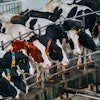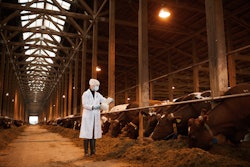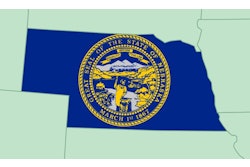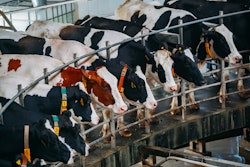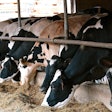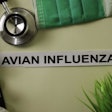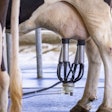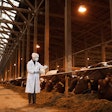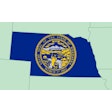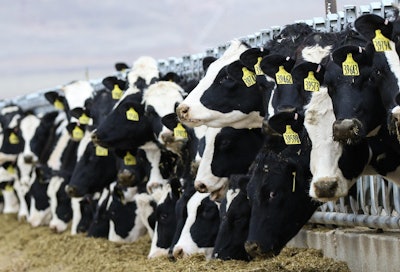
When the H5N1 virus first appeared in California's dairy cattle, the state's response required rapid adaptation, extensive cooperation and hard-learned lessons about managing a novel disease outbreak.
Speaking at the Animal Health Canada (AHC) Forum 2025 on September 24 in Ottawa, Ontario, Natalie Ward, a veterinarian with the California Department of Food and Agriculture (CDFA) shared insights from the agency’s response to what became a challenging multi-month crisis affecting dairies across the state.
While Canada has not yet had to deal with any bovine H5N1 cases, Ward was invited to speak to help the country be better prepared, should that day come.
Early detection and initial challenges
By the time H5N1 – also known as highly pathogenic avian influenza or HPAI – reached dairy cattle in California, it had already been confirmed in other states, with Texas being the first.
Despite knowing H5N1 had already been present in other states, and numerous commercial poultry operations in the state had dealt with the situation, it wasn’t immediately identifiable when it reached California cattle.
The disease's non-specific presentation initially complicated detection efforts, she said. Affected cows showed subtle signs, which included appearing "a bit off," producing abnormal milk, displaying mild nasal discharge (occasionally bloody), reduced feed intake, and significant milk production drops. Some animals developed fevers, though not consistently, she said.
Complicating matters was that during a hot summer, these symptoms could easily be attributed to heat stress or other common conditions.
"It was easy for dairymen to miss this or attribute it to something else," Ward said.
“It took a little bit for (the first affected dairy producers) to realize this may not be something typical. Then I, at about 6 a.m. on a Monday, got a call from a vet who I know would never call me unless there was something bad going on.”
By the time Ward received that call, several weeks had already passed since the disease's likely introduction, meaning precious time had been lost in containment efforts.
Laboratory capacity and testing infrastructure
One of California's most significant early challenges was laboratory capacity. The state's lab network faced unprecedented demand when hundreds of dairies required testing simultaneously, alongside regular workloads and potential avian HPAI samples. This bottleneck threatened the rapid response needed for disease management.
The solution required coordination with the national laboratory network, distributing samples across multiple facilities to maintain rapid turnaround times.
Sample logistics proved complex during the winter months, with samples frequently delayed in some places, with Ward specifically identifying Indianapolis, Indiana. Those delivery delays in turn delayed response coordination.
Quarantine strategy and movement controls
California implemented strict quarantine protocols and required three negative tests one week apart before releasing dairies from quarantine.
Movement restrictions focused heavily on lactating cattle and springer heifers within 30 days of calving, identified as the highest-risk categories for viral transmission. These animals carried significant viral loads when infected, making their movement control critical for preventing spread between facilities.
The quarantine duration varied dramatically between operations. Some dairies experienced rapid infection cycles, reaching peak disease activity quickly before clearing the virus. Others lingered under quarantine for months, continuing to test positive in bulk milk samples even without clinical signs.
Biosecurity implementation challenges
Applying effective biosecurity measures to dairy operations proved particularly challenging, Ward said. Many dairies lacked existing biosecurity infrastructure, making rapid implementation difficult.
And while many farms implemented comprehensive biosecurity measures, Ward said, efforts weren't always successful.
The reality of California's dense dairy regions, where facilities could see neighboring operations from their property, meant that individual biosecurity efforts could be undermined by less stringent practices at adjacent dairies, she said. This geographic density, with 60-100 dairies within a 10-kilometer radius in some areas, made traditional surveillance zones impractical and required a more regional management approach, Ward said.
Federal cooperation and resource coordination
The response evolved from state-level management to extensive federal cooperation. Initially, CDFA handled the dairy outbreak independently while maintaining communication with United States Department of Agriculture (USDA) officials.
Over 100 USDA personnel were deployed to California, proving crucial as the state dealt with the virus in both poultry and cattle.
“We certainly could not have done this without them,” said Ward “At some point, we had well over 100 people deployed into our state helping us. And gosh, we I just can't even imagine how we would have done it without them.”
The division of responsibilities - with USDA placing more focus on avian cases while the state concentrated more on dairy operations - allowed for more effective personnel utilization, which was really handy during holiday period that spanned Thanksgiving, Christmas and New Year's Day.
“I definitely did not see my family through most of the holidays this year, but it's a little easier for me to do that than to have somebody deploy from another state and spend the holidays away from their family,” she said.
The response required identifying essential functions, determining what could be managed virtually, and consolidating roles as the poultry outbreak subsided.
Industry cooperation and communication
Dairy producer cooperation varied significantly across regions and individual operations. Initial skepticism was common, with some producers dismissing the disease based on informal communications from contacts in other affected states. Misinformation from various sources, including people from some animal pharmaceutical companies, also complicated early response efforts.
Ward's personal history in the region proved valuable for establishing credibility with producers who might otherwise have been skeptical of outside authorities. This relationship-building became crucial for gaining industry buy-in for necessary management changes, she said.
Producer responses to affected cattle also varied widely. Some treated aggressively with vitamin supplements and supportive care, while others with limited resources focused only on the most severely affected animals. Interestingly, she said, both approaches seemed to achieve similar outcomes.
Evolution of response strategy
California's response strategy evolved significantly throughout the outbreak. Initial plans had to be modified as real-world challenges emerged.
Worker safety also became an increasingly important focus over time. Protecting dairy employees through proper personal protective equipment (PPE) - including gloves, face shields, and goggles - became paramount, both for worker health and preventing transmission to their families and domestic animals.
Communication strategies also shifted. Early efforts focused on basic disease recognition and compliance with movement restrictions. Later phases emphasized education about the known versus the unknown aspects of the virus.
Current surveillance and management
Today, California maintains statewide surveillance across more than 1,000 dairies. Producer cooperation remains regionally variable, with some areas showing 90% compliance while others being less cooperative.
Communication concerning California dairies and the virus has become more informal, with text messaging becoming a valuable communication tool for rapid reporting of potential clinical signs or movement questions.
California’s current priorities include continued worker protection, maintaining surveillance systems, and protecting poultry operations through enhanced biosecurity when dairy cases are detected nearby. Rather than maintaining constant high alert status, poultry operations can now target enhanced protection based on local dairy surveillance results, she said.
Key lessons for the industry
Ward pointed out that California's experience offers several critical lessons for other regions and future responses:
- Preparation is essential but must remain flexible. While advance planning proved valuable, rigid adherence to initial protocols would have hindered effective response as new challenges emerged.
- Laboratory capacity requires early consideration. The testing bottleneck could have severely compromised response efforts without proactive coordination with national laboratory networks.
- Communication and relationship-building are crucial. Success depended heavily on establishing trust with producers and maintaining clear, honest communication about both known facts and continuing uncertainties.
- Worker safety deserves primary attention. Protecting dairy employees became increasingly central to response efforts and remains a key ongoing concern.
- Regional coordination is essential. The dense concentration of dairies in California required moving beyond traditional surveillance zones to regional management approaches.
View our continuing coverage of the global avian influenza situation.

